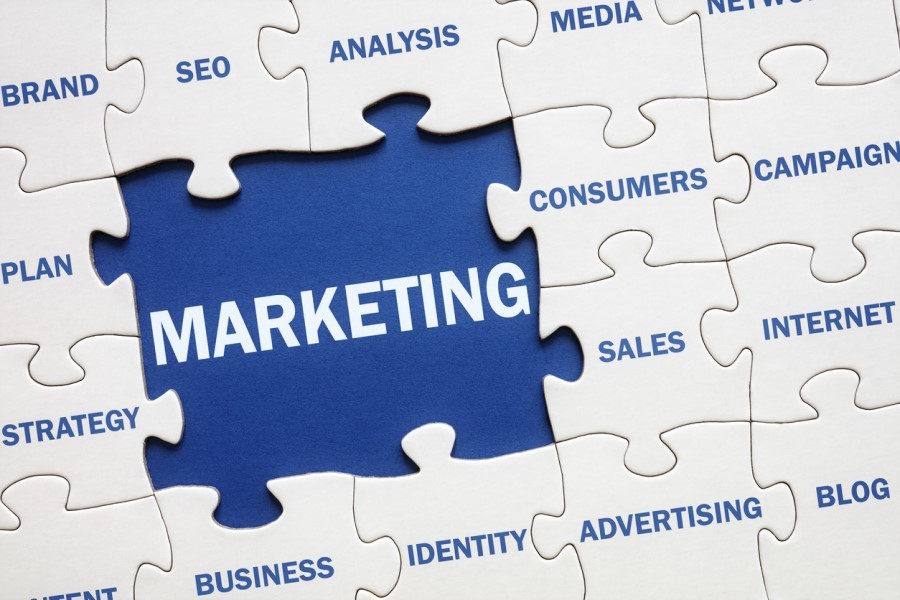
Did you know that manufacturing is returning to America? According to the Washington Times, many manufacturing jobs are “reshoring” due to global supply chain issues. Manufacturing marketing strategy is undergoing a renaissance, and we’re here to help you navigate.
A core issue in the marketing strategy for manufacturers is a focus on the product and not the people their product is designed for. Sure, you might have an amazing product. Your buyers still require a reason to buy it.
Introduction to Marketing Strategy for Manufacturers
The first question you should be asking yourself is “why would someone want to buy my product?” This simple question allows you to enter the shoes of your prospective buyer. Your buyer will have many questions before making a purchase. Your job is to answer all of them before you start your marketing campaign.
The first step in your marketing plan should be to have every member of your team ask the silliest and most complicated questions about your product. You can even ask your immediate family and friends to submit their questions too. The purpose of this introductory exercise is to discover your target market. Even if you’re working in a complicated, niche industry, never undervalue the insight of the laymen.
Even though you’ve already created a brilliant product, your next job is to cultivate your brand. If no one can understand what you’re selling, you have nothing. Once you’ve gathered your questions and queries, it’s time to start messaging exercises. Let’s dig into these next!
Messaging and Brand Exercises
Every sales strategy starts with messaging exercises. You’ve gathered questions concerning your product from a wide range of demographics. Now it’s time to answer those questions.
We recommend working as a team to answer every question as clearly and succinctly as possible. If you’re manufacturing a complicated product, a fun game you and your team might play is the superhero and villain game. If your product was a superhero, who would be the villain? We don’t mean what competitor is your villain. We mean, what problem does your product solve? What aspect of your product solves the problem defined by your villain?
Thinking of your manufacturing company as a superhero can help you access the more childlike parts of your brain. If you’re still stuck in the mud of big words after the superhero and villain game, why not pretend like you’re explaining your company to a child?
Somewhere between these two forms of messaging, you’ll find your sweet spot. You’re not trying to create a catchy brand slogan just yet, so don’t feel like you have to be clever in your answers. Before moving on, make sure you keep all of the questions and answers you’ve used in your messaging exercise. They’ll come in very useful later!
Competitor Market
Regardless of whether you’re a business-to-business or business-to-customer company, a competitor analysis is a key aspect of your marketing plan. The last thing you want is to use the same terminology as a competitor and lose out on huge amounts of digital engagement.
Your analysis starts with a search engine. In manufacturing, many of your competitors will have an online presence. However, unlike almost every other industry, many manufacturers do not leverage industrial online marketing options.
Make a list of every organization you find that has similar offerings to yours. Assess what language they use to market their products and services. From here, do a similar search of people and organizations who could become your customers. You’re absolutely allowed to call these companies and ask them who currently fulfills their manufacturing needs.
SWOT Analyses
Messaging exercises are frequently coupled with SWOT analyses. SWOT stands for strengths, weaknesses, opportunities, and threats. Compare your results to your competitor analysis.
The best marketing strategies for manufacturing companies fall in line with the results of these combined analyses. Your goal is to inform, persuade, and remind customers of why you’re the best choice. With all of these datasets combined, you can start scripting your marketing strategy. Let’s look at the types of scripting you need before implementing your digital marketing for manufacturing.
Copywriting, Strategic Messaging, & Brand Primers
Remember those questions you gathered earlier? Now is the time to turn these questions into your comprehensive FAQ. As you develop your marketing plan, one of the best practices is to turn this information into a brand primer.
A brand primer includes key terms, phrases, and other snippets of language that will feed into your overall digital presence. As you and your team hone the language you use to describe your product, your marketing terminology will start to appear.
Buyer Personas
A buyer persona is an identity depicting your ultimate customer. A huge amount of data goes into the development of the best buyer persona. Gathering this data is best achieved with third-party help, such as the team here at David Taylor Digital.
Creating a detailed buyer persona for your manufacturing business helps guide the language you’re using to communicate your product. While you and your team have done a lot of work determining who you think your customers are, establishing a buyer persona from real metrics helps fill any gaps.
Once you’ve completed all of the background research, it’s time to make your information public. The best place to start is with the best User Experience (UX) and User Interface (UI) for your website design.
UX/UI Website Design
The website design for manufacturing companies is specific. Unlike most websites, manufacturing companies need to prioritize optimization for mobile devices. Most manufacturing companies need to impress professionals with cohesive branding and calls to action.
Having business clients means that you’re dealing with demographics who are frequently “on the go.” These people don’t spend time sitting behind computers. They do almost all of their research from their cell phones. Having a streamlined user experience on your site is key for heightened engagement. The easier you make your user interface to use, the more likely you are to have someone get in touch. Mobile UX/UI is a key aspect of any marketing strategy for manufacturers. If your company already has a website, optimizing it for mobile is something we can help with. Our job is to guarantee the right first impression.
Branding & Graphic Design
Part of that first impression is the branding and the graphics of your site. Anything that looks like it hasn’t been updated since 2002 is guaranteed to turn off potential clients.
Branding and graphics should fit seamlessly into your intuitive mobile design. However, the wrong graphics can stop your site from loading quickly, sending your hard-earned clicks to a competitor. Much of the UX of branding is done on the backend. The front end is what your prospective clients will see, so ensuring that your marketing strategy is symbiotic across all of your digital assets is key.
Your website is important, but your website and company logo may also appear on aggregator sites like Yelp and social media. We’ll dig into the nuance of social media marketing later in this post. What you need to know now is that your branding must be the same across all platforms. When you’re picking the right branding, try to consider what you what customers to associate with your brand. Intrinsic values like reliability, quality, speed, precision are key traits to explore.
Whatever your chosen branding, clarity is the most important aspect. If you’re not sure what you think will work best for your manufacturing marketing strategy, we can help.
Search Engine Optimization (SEO)
SEO is a key aspect of the digital footprint of manufacturing companies. Great SEO will attract visitors to your site through search engines like Google, Bing, and more.
Investing in expert SEO is something that all manufacturing companies require at some point in their development. Upwards of seventy-five percent of visitors to your site will find you through your SEO implementation. Those companies that put off developing keywords can actually fail in their business! In order to choose the best SEO, you need to consider your customer base. If you’re only looking for local clients, then localized SEO is inherently helpful. If you’re a national brand, broader keywords related to your manufacturing acumen are a core option.
It’s very easy to do SEO completely incorrectly. Without employing an expert in SEO, you put yourself at risk of ending up deep into the Google search engine. SEO will further help you determine the type of people finding your website. Such analytics allow you to grow and hone your brand. Of course, there are other means of growing your brand online. SEO is seen as an organic approach to growth. However, you should be considering how to bring in customers from a range of sources.
Digital Advertising
Digital advertising plays an important role in the manufacturing industry. Here at David Taylor Digitals, our aim is to help you grow your digital presence through a range of digital advertising opportunities.
Various forms of digital marketing campaigns exist that will support your manufacturing marketing strategy. Think of digital advertising as online promotion. It’s a gift that keeps on giving.
Even if your customer doesn’t see your advertisements directly, platforms like social media might suggest your website to a friend or colleague. It’s easy to share information via social media. One advertisement could end up reaching thousands of customers through digital word-of-mouth.
Most digital advertising opportunities are inexpensive or free! When coupled with great SEO, digital advertising can revolutionize your business. Let’s explore some options for your digital advertising opportunities.
Search Engine Marketing (SEM)
Did you know that only half of American startups make it through the first five years of business? Part of the 50 percent failure rate is due to visibility. If your company can’t be found online, you can’t make money.
There is a wealth of reasons to invest in SEM, mostly related to brand awareness. What most manufacturers like about SEM is the ability to control your spending. If you’re a startup, you’re likely on a tight budget. Many online marketing tools won’t allow you to be diligent with your spending.
SEM is also an immediate return sales strategy for marketing companies. When you post your ad, it will appear immediately online. Your SEM campaign will integrate with your SEO, boosting your ranking organically too. The flexibility of SEM is huge. You can decide the exact aesthetic of your ads. Not sure what will work for you? Get in touch with us today and we can help hone your brand campaign. Though SEM is a form of pay-per-click (PPC) advertising, there are some differences. We’ll look at PPC next!
Pay-Per-Click
Pay-per-click (or PPC) is arguably the most precise form of digital advertising. PPC advertisements come in various formats. For example, there are video ads, display ads, search ads, remarketing, and more. The most popular PPC ads are search ads. Search ads are built around your SEO keywords. Your manufacturing company is likely part of a larger industry.
Your chosen search keywords will be dictated by both your specialty and the other popular terms used by your competitors. It’s easy to tell Google Adwords what terms you want to use. Once you’ve input those terms, you’ll come up in the Google Ads on the search engine. Search ads work almost like an auction. You can decide what you want to pay. Google then places your website ad where your payment amount designates appropriately.
We recommend search engine ads as a starting point for new manufacturing companies with limited SEO. Even just a few dollars investment can mean a wealth of new clients, but PPC is not necessarily the best long-term marketing plan for your manufacturing company.
Retargeting
Retargeting ads are a great way of staying in touch with leads. When someone clicks on your site, they leave a digital footprint. Many first-time visitors won’t necessarily get in touch with you. Retargeting ads are far more creative than PPC. When someone clicks on your site, you can trail them to their other social media and search engine usage. Have you ever noticed how you’ll look up a pair of shoes, and then Facebook will suddenly be recommending them to you? That is a retargeting campaign!
Using visual tools to aid in your retargeting is one of the best marketing strategies. By appearing to prospective clients and customers, they’ll eventually feel like they know you. The connection builds trust and is more likely to realize a sale. Retargeting is a long-term sales strategy for any manufacturing company. Consistent branding is a key aspect of success in retargeting campaigns.
The other great thing about retargeting is building overall brand awareness. The more people who click on your ads means the higher you rank organically on search engines. If you’re interested in learning more about retargeting, the team at David Taylor Digital has everything you need to get started. Some companies choose a handful of designs and end up using them for years.
Next, it’s important to understand the various platforms for campaigning. If you’re not a regular social media user, we’ll explain everything to you.
LinkedIn Ads
LinkedIn ads have proven incredibly successful for a wealth of different industries and companies. Like all social media sites, the more often you post, the better!
The first place to start is setting up a LinkedIn page for your business. Your page should contain almost exactly the same information as your website. You just need less of it. As we’ve already ensured your branding is clear, users should easily recognize your information. Your company bio should be to the point, also directing people to go to your website to find out more.
In fact, all of the content should direct leads to go to your website. From here, it’s all about what you want to post. Blogs and content marketing are great. Hashtags are also essential, but don’t overdo it! You can also invest in sponsored content. Sponsored content is more likely to reach a professional audience. You can further narrow your targeted audience through their interface.
Upwards of 80 percent of B2B leads come from LinkedIn. Even if you don’t want to use any other form of social media, LinkedIn is a core marketing strategy for your manufacturing company.
Facebook Ads
Now known as “meta,” Facebook ads are everywhere. The company also owns Instagram and WhatsApp, so you can reach a huge audience with just a few clicks.
Facebook’s ad team suggests that you should have a fully developed marketing plan before starting with Facebook ads. Manufacturing companies typically outsource their Facebook ad campaigns to a third party because the process can be time-consuming. Delegating this responsibility is more likely to realize returns. If you’re unsure of your intended goals, the types of ads you’d like to run, then our team can help hone your strategy. Even designing the ads is a time-consuming process. If you have a rough budget in mind, get in touch with us today to see how we can help.
Blogging & Content Marketing
Content marketing is technically an umbrella term. Some of the examples of marketing we’ve explored are forms of content marketing. However, most people link content marketing to blogging and other digital media. Writing and sharing blogs from your website is a great way to integrate SEO keywords and phrases. Blogs also show your intended audience that you are experts in your field.
Blogging shapes specific results. The more you blog, the higher you can rank on search engines. If you share your blogs on social media, people will start to associate your manufacturing company with high knowledge capital. Blogs further allow you to build link and sales strategies. In essence, blogs are just forms of copywriting. It’s easy to convince leads to become customers if you make a compelling argument in your blogs.
Many manufacturing companies will use blogs to guest post to other websites. Most online news outlets will let you pay a small amount to post your blog. If your blog includes enough links, you can use your content to massively expand your lead demographics. Guest posts further increase your search engine ranking. Every time you post, the algorithm notes that people are linking to your site. The most important aspect of blogging and content marketing is consistency. No matter what you choose, you have to maintain the rhythm to see consistent results.
Videos, eBooks, newsletters, podcasts, webinars, infographics are also content marketing. If you’re interested in learning more about the best content marketing for you, we have all the answers.
Monthly Reporting
Monthly reporting is probably the most important data you’ll gather from your marketing campaign. If you fail to gather and navigate these datasets, you might spend a lot of money on unsuccessful campaign strategies. Monthly reporting is not a straightforward process. If you’re building an internal marketing team for your organization, you’ll need to hold monthly meetings.
If you’re outsourcing your marketing, the team you use should be sending you weekly or monthly reports to show the success of your strategies. A monthly report should include relevant metrics and key performance indicators. The monthly report process is rated as one of the most disliked aspects of a marketing campaign. Experts describe the process as being deep in the weeds of knowledge. Finding your way out can be tough, but that’s what we’re here for!
Learn More About Manufacturing Marketing Strategy
If you still have questions about the best marketing strategy for manufacturers, get in touch with us today to request a free quote for what you need!
Picking the best manufacturing marketing strategy is not a one-size-fits-all approach to growing your business. No matter what your needs, David Taylor Digital will be able to guide and support you. You can depend on us to realize all of your marketing and growth goals. We look forward to being part of your success story.





